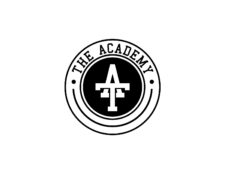As we continue to bury ourselves deeper and deeper into social media, it is inevitable for us to come across athletes doing exercises that look insane or something that we can’t even fathom doing. What we don’t see are the exercises that have been scientifically proven to produce results, build strength and improve overall athleticism. I wish I had the answer as to why this is.
The 3 main movements I am going to cover and recommend making the basis of your training program have been the most common exercises for centuries, simply because they work.
I’m going to narrow down this list to the absolute bare minimum of exercises that we actually NEED to develop strength. A lot of you will probably be disappointed when you see this list because your favorite exercise machine is nowhere to be found on this list.
1.) The Squat
Now this can be a variety of different types of squats, including: back squats, front squats, safety bar squats, Bulgarian split squats, etc.
If your goal is to develop strength, build muscle and improve your overall physique, then we must squat. With that being said, if you say that you can’t squat because of a “bad knee” or “low back pain” then it is time to seek guidance/coaching because everyone should be able to perform some kind of squatting motion. For example, if your low back hurts while doing back squats, then try front squats. With front squats we are generally able to maintain a more vertical and upright torso, which will take a lot of the strain off of our backs. Unilateral squats such as the Bulgarian split squat is another great option because most of us don’t spend enough time training unilaterally and therefore, we have imbalances throughout our bodies.
2.) The Press
Again, we have a lot of choices when it comes to choosing an exercise. Of course, the most common one is the barbell bench press. However, there are other presses that can produce and develop just as much strength, such as the overhead press, dumbbell bench press, floor press, incline dumbbell bench press and even a damn push-up.
One of the most common mistakes we see with “coaches” and “trainers” these days is they will force their clients into doing the most advanced exercise even if they are not ready for it. For example, if someone cannot perform a perfect body weight push-up, then they sure as hell are not ready to perform the barbell bench press. Learning body awareness, proper breathing techniques, and muscular control must be achieved before any further steps are taken.
3.) The Hinge
Most of you know this one as being the Deadlift, which is considered by many people as being the KING of all exercises and I can’t argue that. The deadlift is possibly the best exercise of all time for developing full body strength and if your trainer/coach is not prescribing it, then it’s time to find a new coach. The hinge is not a squat so don’t try to perform it like a squat. It can be one of the most technical and challenging exercises to learn and to perform correctly. I can guarantee that about 90% of you are not performing a deadlift completely correct. A good thing to remember is that if it’s hurting your back, your most likely doing it wrong.
Just like with the squat and press, the hinge also has multiple variations that you can do if you are not comfortable with the full deadlift yet. Some great hinge variations that we can do to practice the movement are the: hex bar deadlift, dumbbell/barbell RDL, elevated barbell deadlift, and good mornings. Keep in mind that the goal should usually be to progress to being able to do the most advanced version, so we should not get complacent with performing the easiest version.
The hinge is the safest and most effective way to practice picking up any type of object whether it be a barbell, a heavy box or even just a towel. Most of us have been taught that when we need to pick up something heavy, we should be trying to squat and “use your legs.” It is completely true that we want to use our legs as much as possible but we want to make sure that we are using the correct part of our legs. Our posterior chain (backside of the body) contains the strongest muscles in our body, so why not use them? I could write an entire article just on the deadlift itself, so I will save that for another time. But for now, get to practicing!
Disclosure: I am not recommending by any means that these should be the only exercises that you perform when training. Complimenting these 3 movements with accessory movements and proper programming will help you achieve optimal results. Accessory movements will help target those smaller muscle groups and stabilizer muscles that are not getting enough action during these 3 main movements.
Please reach out to me if you have any questions/concerns about incorporating these into your own training. I’m here to help!
